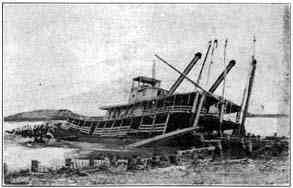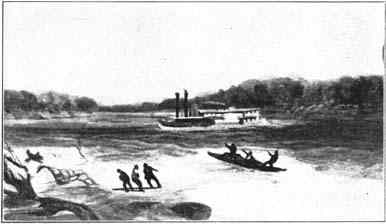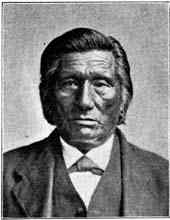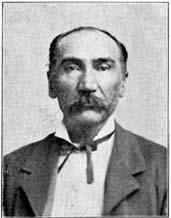|
EARLY POLITICAL AND COMMERCIAL RELATIONS CHAPTER VI Nebraska was claimed by Spain, France and England in the period of early voyages and discovery along the coast. The grants of the king of England to the Virginia and New England colonial companies ran "from sea to sea" and of course included this state, but these were purely paper pretenses. Spain sent an occasional military expedition out upon the plains at intervals of a century or more. But France, by her hardy sons of the forest and plains, first explored and made temporary settlement here. By virtue of this exploration and settlement Nebraska was part of the province of Louisiana,--and as such subject to the King of France,--from about the year 1700 until November 3, 1762, when by the secret treaty of Paris it was transferred to Spain. The king of Spain was the ruler from that date until October 1, 1800, when it was ceded back to France by the treaty of San Ildefonso. The Spanish governor, however, remained in possession until the time it was turned over to the United States which, for upper Louisiana, was March 10, 1804. From that date until October 1, 1804, this region was under a military government, under an act of congress, passed October 13, 1803, which authorized the president to take possession of the new territory and that all civil and judicial powers there should be vested temporarily in persons appointed by him. Under this act Captain Amos Stoddard, of the United States army was governor at St. Louis and had jurisdiction over Nebraska. From October 1, 1804, until July 4, 1805, our state was part of the District of Louisiana and annexed to the territory of Indiana, whose capital was then at Vincennes. William Henry Harrison was then governor of Indiana and with the judges for that territory, appointed by the president, enacted the laws for this region--the people having no voice in the matter. From July 4, 1805 until December 7, 1812, this was part of the territory of Louisiana, with a governor and judges of its own, appointed by the president, who enacted the law. From December 7, 1812, until 1821 it was part of the territory of Missouri. All free white males over 
Wreck of Missouri River Steamer |
21 years old who had lived in the territory twelve months and had paid a territorial or county tax and whose homes were on lands to which the Indian title had been extinguished, were entitled to vote for members of a lower house of the legislature, which lower house in turn nominated eighteen candidates for an upper house of whom the president chose nine as members. The Indian title not being extinguished to Nebraska none of the few white men here could vote. From the date of the admission of the state of Missouri in 1821 until June 30, 1834 Nebraska was an unorganized, unattached, wilderness. The state of Missouri was cut out of the old Territory of Missouri, and apparently in the heat of the fight over the admission of the state the rest of the territory was forgotten. The only provision in the United States laws applying to Nebraska was the eighth section of the Missouri bill--"the Missouri Compromise"--which forever prohibited slavery. As Nebraska was not a part of any judicial or other civil district there were no courts in which suits could be tried and no sheriff or marshal with authority to serve writs. This virtually made 
The Yellowstone. The First Regular Steamer Plying on
Nebraska Waters "club law" the governing force in our state. |
Two Crows ishing all government trading establishments in the Indian country. This act was signed May 6, 1822, and that very summer the American Fur company engaged in the Missouri fur trade with western headquarters at St. Louis. Some of the experienced St. Louis traders were taken into the company. In 1827 its strongest rival, the Columbia Fur company, which had Nebraska posts at the mouth of the Niobrara and at Council Bluff, was absorbed by consolidation. In 1831 the first regular steamboat line from St. Louis to the upper Missouri, stopping at Nebraska points, began business. The line consisted of the steamer Yellowstone and was owned by the American Fur company. It was now time for the new commercial giant to drive the rival fur dealers from the country. In the remote regions of the Missouri, beyond sound of the military bugles at Fort Leavenworth, this meant civil war and true to her historic destiny Nebraska was for some time the seat of war. |
Henry Fontenelle ican Fur Company's domain the latter by shrewd political work secured the revival of the office of Indian agent for the upper Missouri and the appointment of one of its own employes, Andrew Drips, as that agent. One hand of this great corporation was Politics, the other Business and each washed its fellow. A good example of its enterprising methods occurred in 1833 when McKenzie, manager of the company's business, finding great difficulty in smuggling liquor past the military Inspection at Fort Leavenworth, started a distillery at Fort Union near the mouth of the Yellowstone. The connection this fact has with Nebraska history is that Nebraska corn was shipped up the river by Joshua Pilcher, the company's agent at Council Bluff, to run the distillery. McKenzie writes repeatedly to Pilcher to load the Nebraska-grown corn on the steamboats as the squaw corn grown on the upper Missouri is not so good. |
ment going on at this time. This was the transplanting of the bulk of the Indian population in the older states east of the Mississippi to new homes west of that river,--and most of them west of the Missouri. In pursuance of this plan there were transferred between the years 1830 and 1840 to the country lying west of a line drawn north and south through Kansas City an Indian population of some 75,000. Of these the Creeks, Cherokees, Choctaws, Chickasaws and Seminoles,--in all about 65,000,--had been located south of the Missouri Compromise line in what is now Oklahoma and Indian Territory. The Delawares, Kickapoos, Shawnees, Pottawotamies, Ottawas, Peorias, Kaskaskias, Piankashas, Weas, Senecas, Oneidas, Tuscaroras and Quapaws,--in all between 5,000 and 10,000,--had been settled in eastern Kansas and, with the transfer of the Sacs and Foxes and loways west of the Missouri, in southeastern Nebraska. Here was one of the greatest migrations of modern times carried on forcibly by the United States government. This large Indian population thus camped on the edge of the plains was of course an effectual block to white settlement. The act of 1834 was designed to make this permanent and to extend the protection of the government against white settlement to the other tribes, natives of the plains region, who made treaties with the United States. It looked forward to the formation of a great Indian state which should include all the country west of the Missouri river. President Andrew Jackson, in his annual message to congress, December, 1835, said: |
 |
 |
 |
 |
|
@ 2002 for the NEGenWeb Project by Pam Rietsch, Ted & Carole Miller |
|||

